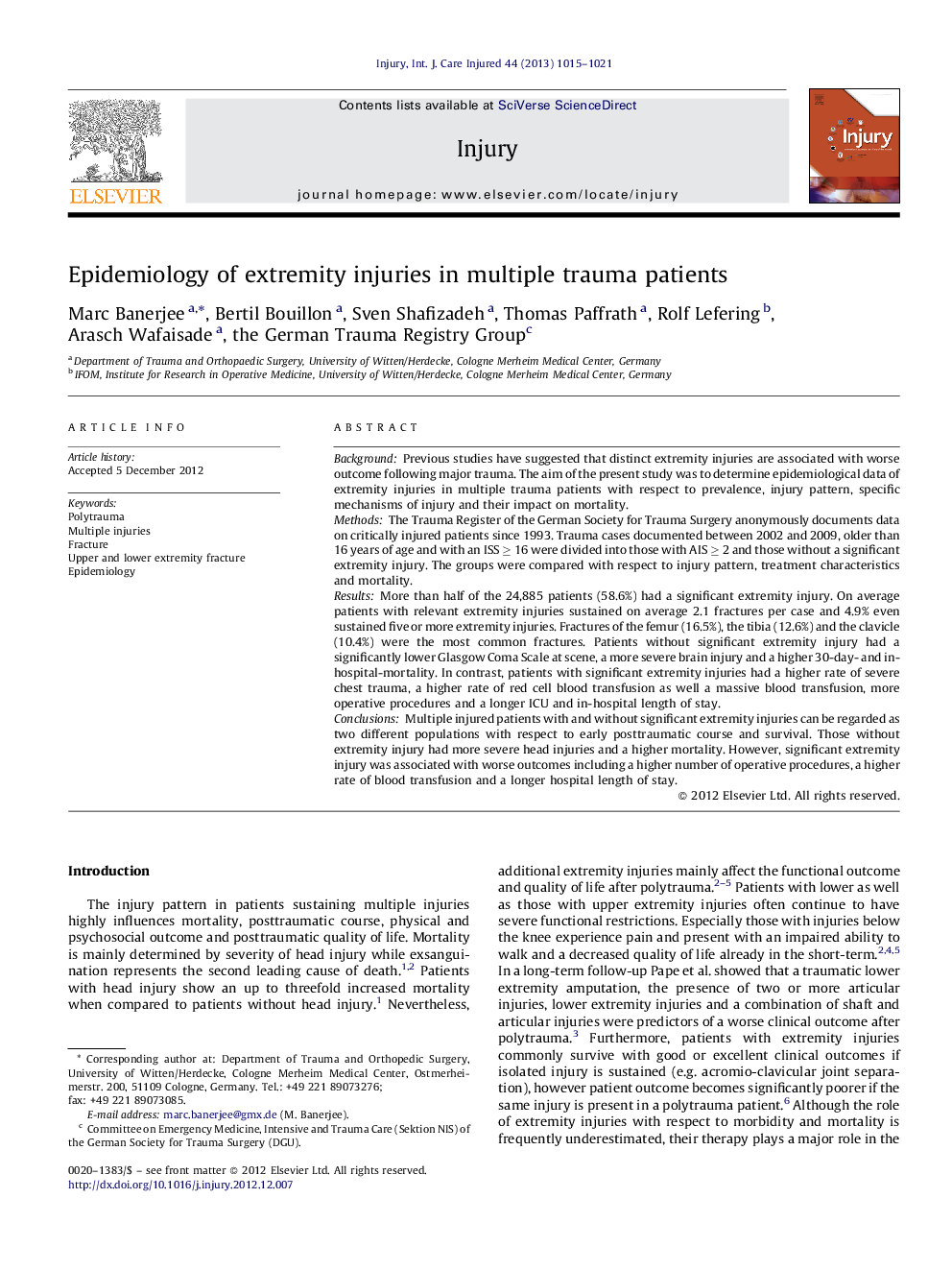| کد مقاله | کد نشریه | سال انتشار | مقاله انگلیسی | نسخه تمام متن |
|---|---|---|---|---|
| 6083648 | 1206001 | 2013 | 7 صفحه PDF | دانلود رایگان |
BackgroundPrevious studies have suggested that distinct extremity injuries are associated with worse outcome following major trauma. The aim of the present study was to determine epidemiological data of extremity injuries in multiple trauma patients with respect to prevalence, injury pattern, specific mechanisms of injury and their impact on mortality.MethodsThe Trauma Register of the German Society for Trauma Surgery anonymously documents data on critically injured patients since 1993. Trauma cases documented between 2002 and 2009, older than 16 years of age and with an ISS â¥Â 16 were divided into those with AIS â¥Â 2 and those without a significant extremity injury. The groups were compared with respect to injury pattern, treatment characteristics and mortality.ResultsMore than half of the 24,885 patients (58.6%) had a significant extremity injury. On average patients with relevant extremity injuries sustained on average 2.1 fractures per case and 4.9% even sustained five or more extremity injuries. Fractures of the femur (16.5%), the tibia (12.6%) and the clavicle (10.4%) were the most common fractures. Patients without significant extremity injury had a significantly lower Glasgow Coma Scale at scene, a more severe brain injury and a higher 30-day- and in-hospital-mortality. In contrast, patients with significant extremity injuries had a higher rate of severe chest trauma, a higher rate of red cell blood transfusion as well a massive blood transfusion, more operative procedures and a longer ICU and in-hospital length of stay.ConclusionsMultiple injured patients with and without significant extremity injuries can be regarded as two different populations with respect to early posttraumatic course and survival. Those without extremity injury had more severe head injuries and a higher mortality. However, significant extremity injury was associated with worse outcomes including a higher number of operative procedures, a higher rate of blood transfusion and a longer hospital length of stay.
Journal: Injury - Volume 44, Issue 8, August 2013, Pages 1015-1021
